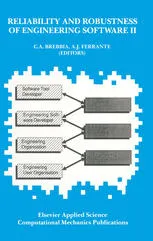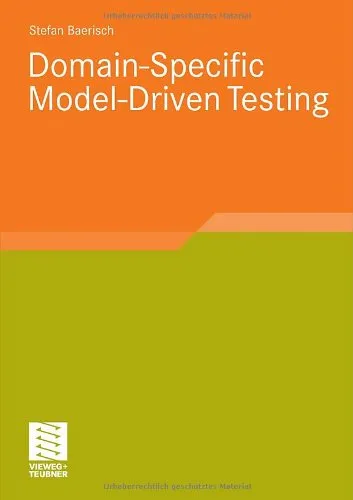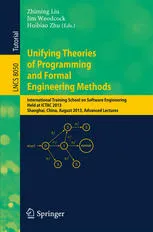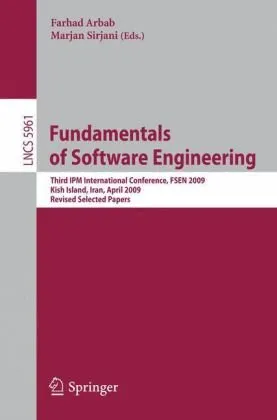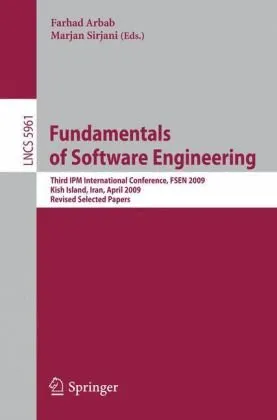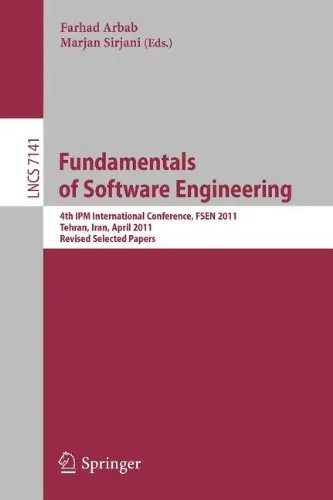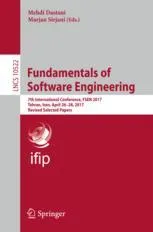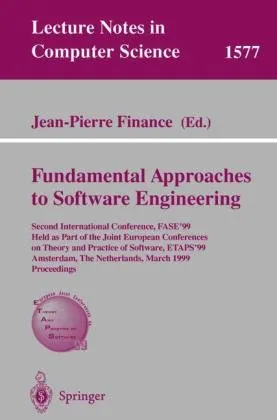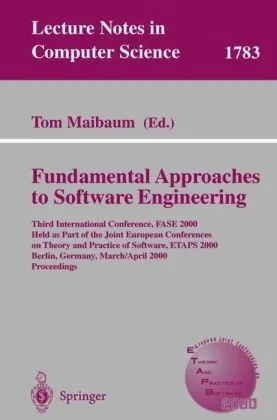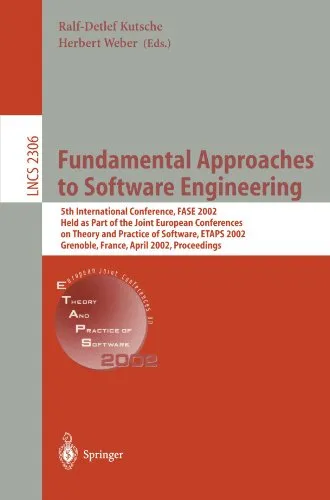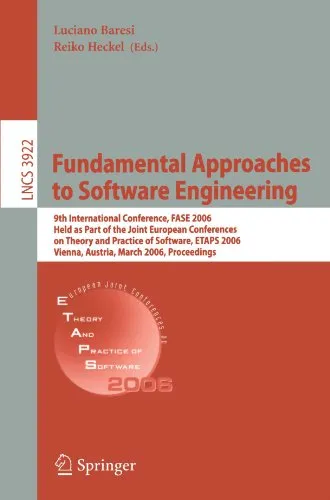Reliability and Robustness of Engineering Software II: Proceedings of the Second International Conference held in Milan, Italy, during 22–24 April 1991
3.9
بر اساس نظر کاربران

شما میتونید سوالاتتون در باره کتاب رو از هوش مصنوعیش بعد از ورود بپرسید
هر دانلود یا پرسش از هوش مصنوعی 2 امتیاز لازم دارد، برای بدست آوردن امتیاز رایگان، به صفحه ی راهنمای امتیازات سر بزنید و یک سری کار ارزشمند انجام بدینکتاب های مرتبط:
معرفی جامع کتاب
کتاب Reliability and Robustness of Engineering Software II، مجموعه مقالاتی است که در کنفرانس بینالمللی دوم با همین عنوان در شهر میلان، ایتالیا طی تاریخ ۲۲ تا ۲۴ آوریل سال ۱۹۹۱ ارائه شده است. این کتاب به بررسی موضوعات کلیدی در مورد قابلیت اطمینان (Reliability) و استحکام (Robustness) نرمافزارهای مهندسی پرداخته و ابزارها، روشها، چالشها و نوآوریهای جدید در این حوزه را معرفی میکند. ترکیب نظریه و کاربردهای عملی در این کتاب، آن را منبعی ارزشمند برای مهندسان نرمافزار، دانشجویان رشتههای مهندسی و محققان حوزه توسعه نرمافزار کرده است.
خلاصهای جامع از کتاب
این کتاب محتوایی جامع و عمیق در مورد طراحی سیستمها و نرمافزارهای مهندسی ارائه میدهد. در طول کنفرانس، مقالات بسیاری ارائه شدند که در این کتاب، به صورت مرتب و طبقهبندیشده گردآوری شدهاند. مباحث اصلی شامل بررسی روشهای تحلیل Failure، بکارگیری روشهای مبتنی بر Data-driven، اهمیت آزمونپذیری (Testability)، و استانداردهایی برای توسعه نرمافزارهای مقاوم (Robust Software) است. بخش جالب این کتاب، بررسی گسترده روشهای متنوع برای تعریف طراحی پایدار و شناسایی ابزارهای قدرتمند در این حوزه است.
در فصول مختلف، مفاهیم پیشرفته مانند آزمون تحمل خطا (Fault Tolerance Testing)، تحلیل آماری، محاسبات کاراییمحور (Performance-driven Computing) و استفاده مناسب از الگوریتمهای مبتنی بر هوش مصنوعی مورد بحث قرار گرفتهاند. این کتاب همچنین چالشهای موجود در طراحی نرمافزارهای پیچیده برای صنایع مختلفی چون هوافضا، خودروسازی و مهندسی عمران را بررسی میکند.
نکات کلیدی قابل برداشت از کتاب
- فهم دقیق مفهوم Reliability و اهمیت آن در نرمافزارهای مهندسی
- شناخت ابزار و روشهای مدرن برای تحلیل و بهبود Robustness در پروژههای پیچیده
- آشنایی با مثالهای واقعی از توسعه Software در صنایع پیشرفته
- درک نقش Fault Tolerance در ایجاد سیستمهای پایدار
- پیشنهادات عملی برای مهندسان در مراحل تست، توسعه و اجرا
جملات معروف از کتاب
"Reliability is not just about achieving success but ensuring gracefully handled failures."
"Engineering excellence is determined by its ability to withstand uncertainties."
چرا این کتاب اهمیت دارد؟
در دنیای پیچیده و پویا امروز، توسعه نرمافزارهای قابل اطمینان و مقاوم نقش حیاتی در تمام جنبههای زندگی و صنعت دارد. کتاب Reliability and Robustness of Engineering Software II به عنوان مرجعی علمی و کاربردی، پاسخگوی نیازهای متخصصان در این زمینه است. این کتاب به خوانندگان کمک میکند تا نه تنها درک کاملی از مفاهیم پایه داشته باشند، بلکه راهنماییهای عملی برای حل مسائل پیچیده مرتبط با نرمافزارهای صنعتی نیز پیدا کنند.
جامعه مهندسی نرمافزار و توسعهدهندگان از این کتاب به عنوان پلی بین تئوری و عمل بهره میبرند. از طرفی، چالشهایی که در بسیاری از مقالات کتاب به آنها پرداخته شده است، نشاندهنده تلاش محققان برای بهبود استانداردهای موجود و ساخت آیندهای بهتر در حوزه فناوری اطلاعات است.
Introduction
Welcome to Reliability and Robustness of Engineering Software II, a scholarly volume that encapsulates the proceedings of the Second International Conference held in Milan, Italy, from 22–24 April 1991. This book is an indispensable resource for engineers, software developers, researchers, and academics seeking guidance on creating robust, reliable systems in the highly dynamic and mission-critical domain of engineering software. This carefully curated collection of papers and discussions addresses the challenges posed by the increasingly complex intersection of software reliability and engineering disciplines, offering a diverse blend of theoretical insights, practical applications, and cutting-edge research findings.
Edited by leading experts in the field—C. A. Brebbia and A. J. Ferrante—this volume tackles the multidisciplinary challenges faced in leveraging software tools for engineering applications. By compiling the contributions and deliberations of renowned researchers and practitioners who attended the conference, this book provides a unique blend of academic rigor and applied science to address contemporary issues in software reliability.
Detailed Summary of the Book
The book spans several key areas related to the reliability and robustness of engineering software, thoroughly discussing methodologies to optimize software performance and maintain integrity under challenging conditions. It emphasizes the intersection of computational techniques and engineering applications, showcasing innovative approaches toward improving software robustness for large-scale physical problems, structural analysis, fluid mechanics, and beyond.
Across its chapters, you'll find a mix of theoretical advancements, case studies, and discussions on contemporary engineering challenges. Topics include:
- Innovative techniques for enhancing fault tolerance in software systems.
- Advanced methods for debugging and validating engineering computation tools.
- Ways to assess and address the impact of hardware inconsistencies on software outcomes.
- Discussions on improving user interaction and streamlining human-software collaboration.
- Research papers exploring artificial intelligence and machine learning for predictive fault analysis.
Through this compilation, the book not only provides a lens into the advancements of the early 1990s but also lays a foundation for evaluating how engineering software has evolved since then. This conceptual clarity and forward-thinking approach make the proceedings highly relevant, even decades later.
Key Takeaways
This book offers numerous technical insights and actionable takeaways:
- The importance of adopting structured testing methodologies to enhance software reliability.
- Understanding the critical role of user-centric design in creating robust engineering software.
- Pioneering frameworks for ensuring data consistency and accuracy in computational results.
- Strategies for mitigating risks in high-stakes engineering applications, such as aerospace, construction, and energy sectors.
- An emphasis on collaboration between software developers and domain engineers to address real-world challenges.
These takeaways empower professionals to think critically about the design and application of software in solving complex engineering problems.
Famous Quotes from the Book
While academic in nature, several compelling observations and quotes capture the essence of the conference proceedings. Among the notable ones are:
"Reliability in engineering software is not the absence of errors, but the capacity to detect, analyze, and recover from them efficiently."
"As engineering systems grow in complexity, their software tools must not only keep up but must predict failures before they manifest."
"Robustness in engineering software is not a luxury but a necessity as it underpins the safety and performance of countless critical systems."
Why This Book Matters
The importance of reliable and robust engineering software cannot be overstated in today's technological landscape. Whether in fields such as computational fluid dynamics, structural modeling, or large-scale simulations, software reliability determines the safety, efficiency, and cost-effectiveness of engineering projects. This book is groundbreaking because:
- It bridges the gap between software developers and engineering professionals, fostering collaboration between these two critical communities.
- It provides original research and groundbreaking methodologies that have influenced subsequent developments in engineering software design.
- It addresses real-world engineering problems using innovative computational solutions backed by rigorous testing and validation frameworks.
- Its multidisciplinary approach ensures its continued relevance to a broad audience across industries and academia.
- It serves as a foundational text for understanding the principles of software reliability and robustness in complex systems.
For readers invested in creating cutting-edge solutions for tomorrow's engineering challenges, Reliability and Robustness of Engineering Software II is a must-read that continues to resonate with its timeless insights and practical relevance.
دانلود رایگان مستقیم
شما میتونید سوالاتتون در باره کتاب رو از هوش مصنوعیش بعد از ورود بپرسید
دسترسی به کتابها از طریق پلتفرمهای قانونی و کتابخانههای عمومی نه تنها از حقوق نویسندگان و ناشران حمایت میکند، بلکه به پایداری فرهنگ کتابخوانی نیز کمک میرساند. پیش از دانلود، لحظهای به بررسی این گزینهها فکر کنید.
این کتاب رو در پلتفرم های دیگه ببینید
WorldCat به شما کمک میکنه تا کتاب ها رو در کتابخانه های سراسر دنیا پیدا کنید
امتیازها، نظرات تخصصی و صحبت ها درباره کتاب را در Goodreads ببینید
کتابهای کمیاب یا دست دوم را در AbeBooks پیدا کنید و بخرید
1227
بازدید3.9
امتیاز0
نظر98%
رضایتنظرات:
3.9
بر اساس 0 نظر کاربران
Questions & Answers
Ask questions about this book or help others by answering
No questions yet. Be the first to ask!
